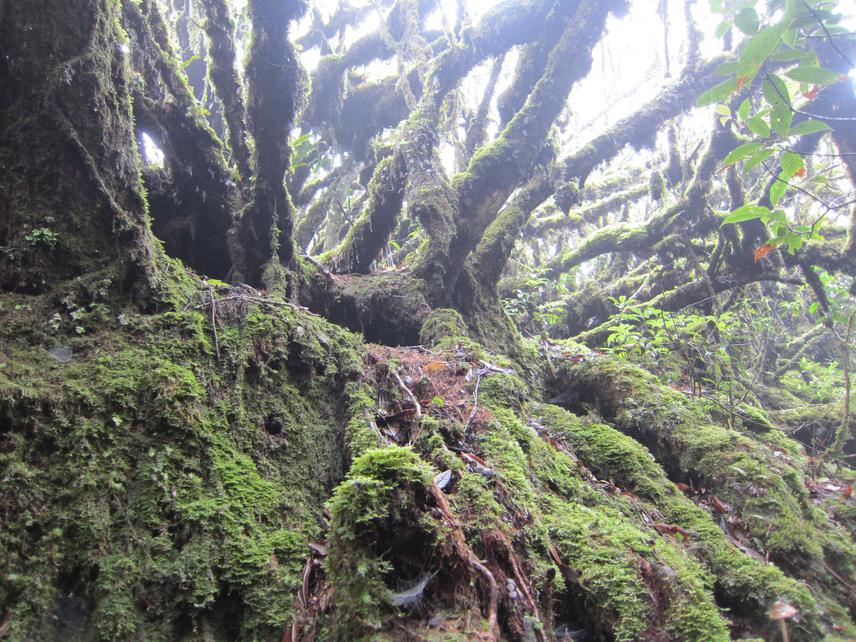Nguyen Thi Thu
The aims of the project are determining plant diversity; survey threatened plant species; improve awareness about plant biodiversity conservation and recommend appropriate conservation measures for Muong La upstream-protection forest.

Ancient tree in the un-touched forest area.
Most conservation activities in Vietnam are in the protected area network although there are rich biodiversity areas which are not yet in the network. In such areas, the Plant resources are being degraded more severely than that in protected areas. Muong La Up-stream protection Forest (MUPF) is an example of this. This is a remote, isolated forest area of Son La province, North-west Vietnam, which is connected to other rich biodiversity areas, namely, Mu Cang Chai species/habitat conservation areas and other parts of Hoang Lien Mountain; therefore the plant resource is expected to be of high diversity. The forest contains some of the last areas of primary forest left in Northern Vietnam. Threatened plant species such as Calocedrus Macrolepis, Fokienia hodginsii, Taxus wallichiana and Madhuc apasquieri have been found in this area although they are over exploited by local people. However, there is very limited information about plant diversity in MLUPF, especially threatened species. Scientific institutions and government authorities lack reliable information about plant diversity to make a suitable conservation strategy for this area. With the current over exploitation in this area, some threatened species may become extinct in the wild before surveys are completed.
This project will conduct initial botanical surveys over a period of 1 year to collect information about plant composition (focus on vascular plants), with a checklist and information on the conservation status of threatened tree species, to raise awareness about biodiversity conservation in MLUPF. These are necessary tasks for planning the biodiversity conservation strategy and plan for future scientific research in this area. The methods to be used include Participatory Rural Appraisal (PRA) and transect sampling. The research will be carried out by scientists with the participation of local in order to combine the indigenous knowledge and scientific knowledge in order to determine the value, status of plant resources in MUPF.